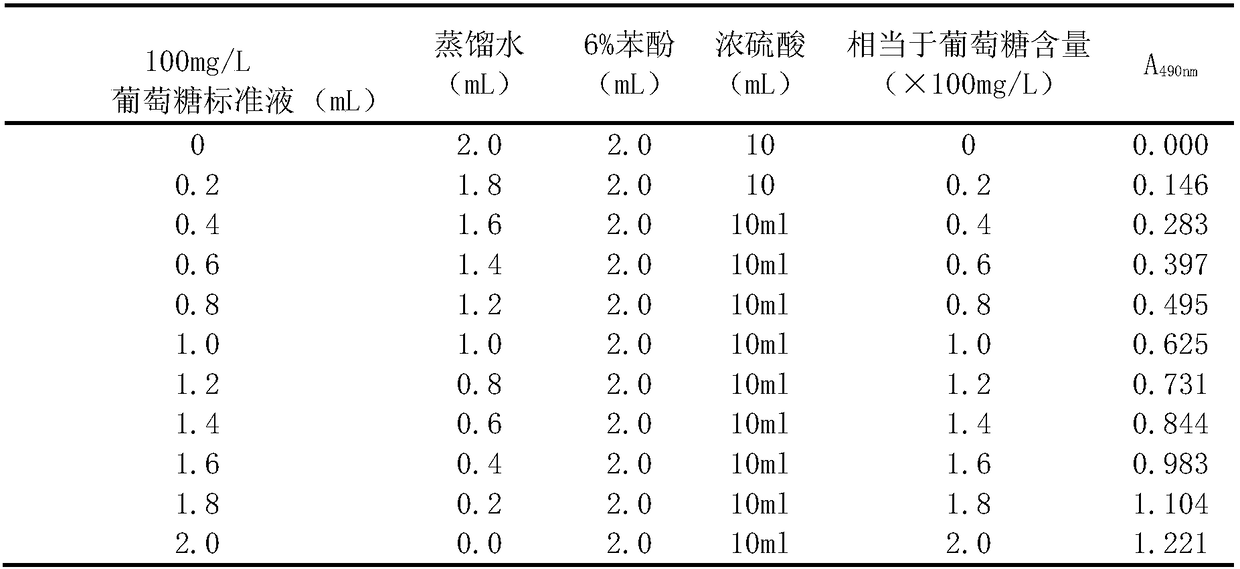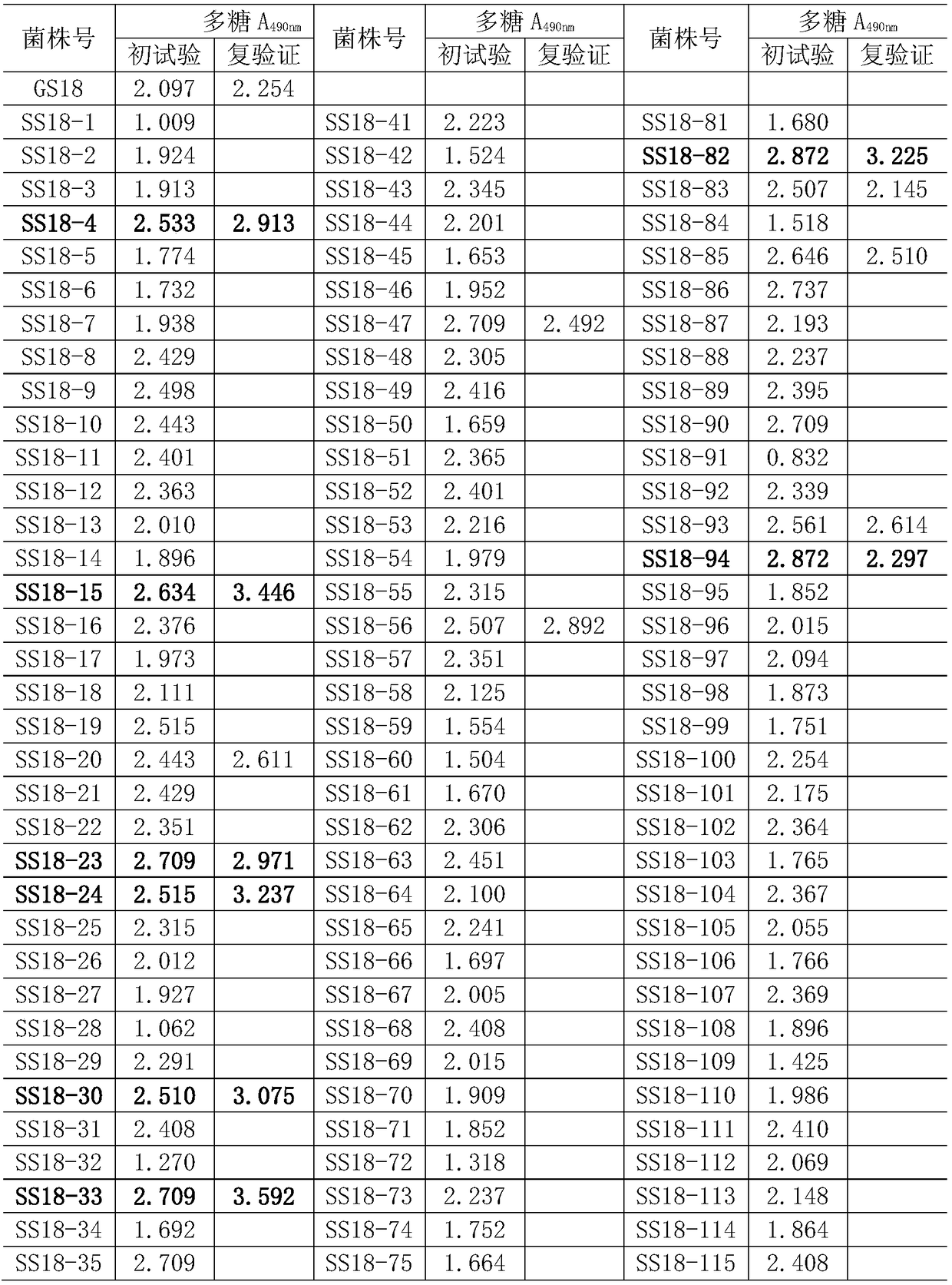Extracellular polysaccharide producing space plant lactobacillus SS18-33 and application thereof to organism anti-oxidization activity improvement
A technology of Lactobacillus plantarum and exopolysaccharides, applied in the direction of Lactobacillus, microorganism-based methods, biochemical equipment and methods, etc.
- Summary
- Abstract
- Description
- Claims
- Application Information
AI Technical Summary
Problems solved by technology
Method used
Image
Examples
Embodiment 1
[0070] Embodiment 1, to the screening of the space Lactobacillus plantarum strain of high yield EPS
[0071] (1) Isolation and purification of bacterial strains
[0072] 1. Strains
[0073] Space Lactobacillus plantarum (Lactobacillus plantarum) SS18: Lactobacillus plantarum (Lactobacillus plantarum) GS18 (General Microbiology Center of China Microbiological Culture Collection Management Committee, preservation number: CGMCC 1.485) returned by Tiangong-2 and Shenzhou-11 spacecraft Space mutation strains are preserved in the Space Microbial Strain Bank of Fullerton Bioengineering Technology (Beijing) Co., Ltd. In order to distinguish the difference between the strains before and after the space launch, the space-mutated strain after the ground-borne Lactobacillus plantarum (Lactobacillus plantarum) GS18 was recorded as the space Lactobacillus plantarum (Lactobacillus plantarum) SS18.
[0074] 2. Strain activation
[0075] Put the glycerol preservation tubes of ground Lactoba...
Embodiment 2
[0110] Example 2, detection of antioxidant activity of EPS produced by Lactobacillus plantarum SS18-33 in space
[0111] (1) Preparation of space Lactobacillus plantarum SS18-33 starter
[0112] Activate the Lactobacillus plantarum SS18-33 in the MRS liquid medium to obtain the activated MRS test tube culture, and transfer the activated MRS test tube culture into a 100mL sterile MRS container with a 3% (volume percentage) inoculum. In the Erlenmeyer flask of the liquid medium, after culturing at 37° C. for 16 hours, the starter of Lactobacillus plantarum SS18-33 was obtained. The number of live bacteria of Lactobacillus plantarum SS18-33 in the starter is (2.0~5.0)×10 9 CFU / mL.
[0113] (2) Fermentation test of Lactobacillus plantarum SS18-33 producing EPS
[0114] Put Lactobacillus plantarum SS18-33 starter into 1000mL liquid MRS liquid medium (initial pH of the medium is 7.0) according to 3% (volume percentage) inoculation amount, and carry out EPS production fermentation...
Embodiment 3
[0152] Embodiment 3, space Lactobacillus plantarum SS18-33 bacterial strain resistance gastrointestinal adverse environment test
[0153] Artificially simulated gastric juice: containing NaCl 0.2g / 100mL, pepsin (enzyme activity: 250U / mg) 0.3g / 100mL, adjusted pH to 3.0 with 1mol / L HCl, the balance was deionized water, filtered through a 0.22μm filter membrane Reserve after sterilization.
[0154] Artificially simulated intestinal juice: dissolve trypsin (enzyme activity: 1655U / mg) in 0.1mol / L phosphate buffer (pH8.0) to make the final concentration 1g / L, add ox bile salt to make the concentration 0.3g / 100mL, filter and sterilize through a 0.22μm membrane filter before use.
[0155] Strains to be tested: Lactobacillus plantarum GS18 on the ground and Lactobacillus plantarum SS18-33 in space.
[0156] 1. Inoculate the strain to be tested in 10mL MRS liquid medium (pH 7.0), and culture at 37°C for 18 hours (thalline concentration is 2.0×10 9 CFU / mL~8.0×10 9 CFU / mL), centrifuge...
PUM
 Login to View More
Login to View More Abstract
Description
Claims
Application Information
 Login to View More
Login to View More - Generate Ideas
- Intellectual Property
- Life Sciences
- Materials
- Tech Scout
- Unparalleled Data Quality
- Higher Quality Content
- 60% Fewer Hallucinations
Browse by: Latest US Patents, China's latest patents, Technical Efficacy Thesaurus, Application Domain, Technology Topic, Popular Technical Reports.
© 2025 PatSnap. All rights reserved.Legal|Privacy policy|Modern Slavery Act Transparency Statement|Sitemap|About US| Contact US: help@patsnap.com



